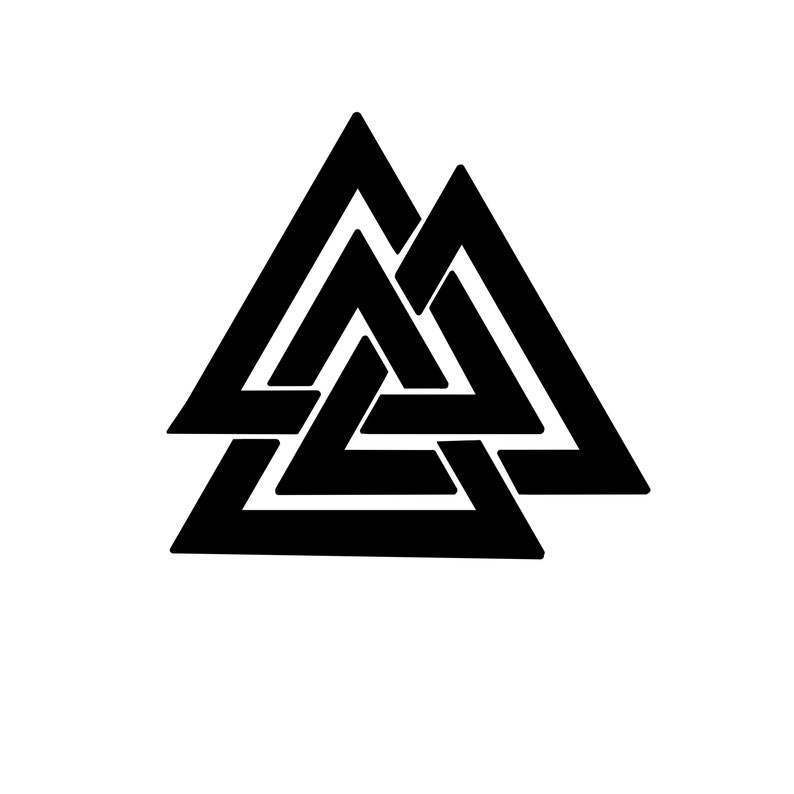

In Norse mythology the concept of fate is reflected by the Web of Wyrd that is created by the Nornswho were known as ‘Shapers of Destiny. Left: Web Of Wyrd (Skuld’s Net) Right: The Norns In Norse myths it is said that the Helm of Awe symbol was worn between the eyes to cause fear in your enemies, and to protect against the abuse of power. The Norse word for this very important symbol (Ægishjálmr or Aegishjalmur) is translated in English "helm of awe" or "helm of terror." The meaning of the name awe is to strike with fear and reverence to influence by fear, terror or respect as, his majesty awed them into silence. The Helm of Awe is one of the most powerful protective Viking symbols used not only for the purpose of protection from disease, but even to encourage all people who might suffer from depression or anxiety. 4. The Helm Of Awe - Viking Symbol For Protection In modern times Valknut, like Triquetra and Horn Triskelion, is often interpreted as a symbol pointing to heathen convictions. In this case, the symbolism in Norse mythology showing three multiplied by three might designate the nine worlds, which are united by the Yggdrasil tree. Read moreĪ Valknut is made of three parts, and the number three is a very common magic symbol in many cultures. 1000 on, Vikings wore Thor’s Mjölnir as well as a cross on a chain or thong around their necks. Wearing Thor’s hammer as an amulet of protection was quite common as this was probably the most popular of all the pagan Viking symbols. Mjölnir, was a magical weapon that always came back to Thor when he threw it. One Norse story tells what happened when when he lost his precious hammer. Thor’s hammer, Mjölnir is depicted in Norse mythology as one of the most fearsome weapons, capable of leveling mountains. Thor who was the storm-weather god of sky and thunder and also a fertility god, was the son of Odin and Fyorgyn, the earth goddess. Thor, ancient god of war is one of the most prominent figures in Norse mythology. Mjölnir means lightning, and Thor’s hammer indicates the god’s power over thunder and lightning. Right: A 10th century Thor's Hammer (Mjölnir) from Odeshog, Sweden Left: Drawing of a Viking Age gold-plated silver Mjölnir pendant (length 4.6 cm) found at Bredsätra in Öland, Sweden, now kept in the Swedish Museum of National Antiquities.


 0 kommentar(er)
0 kommentar(er)
